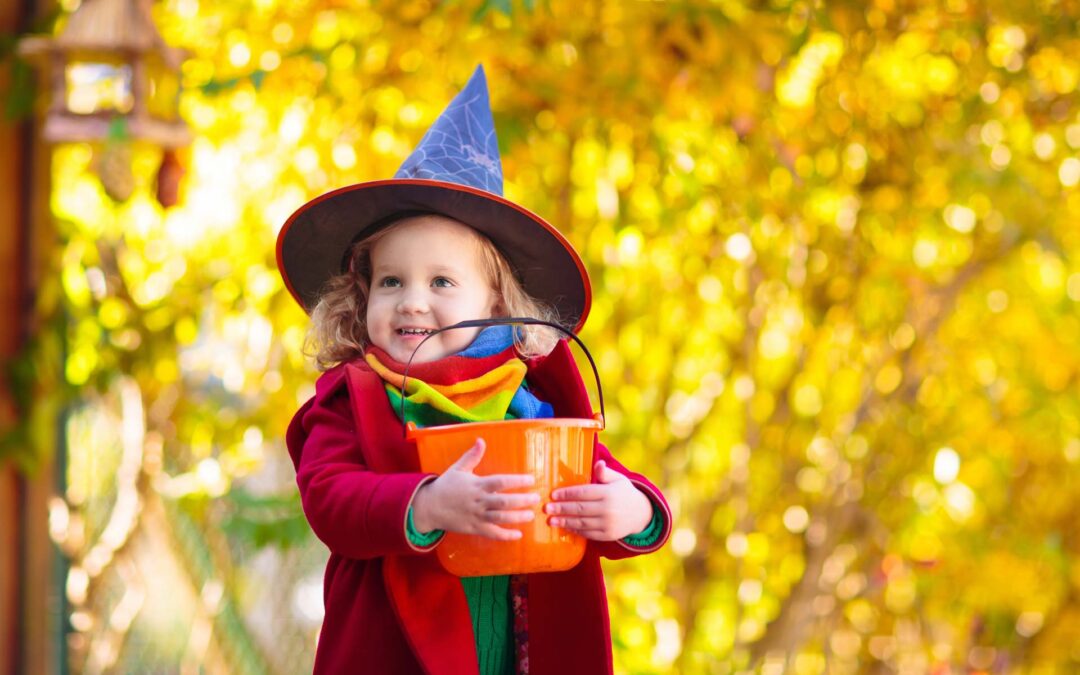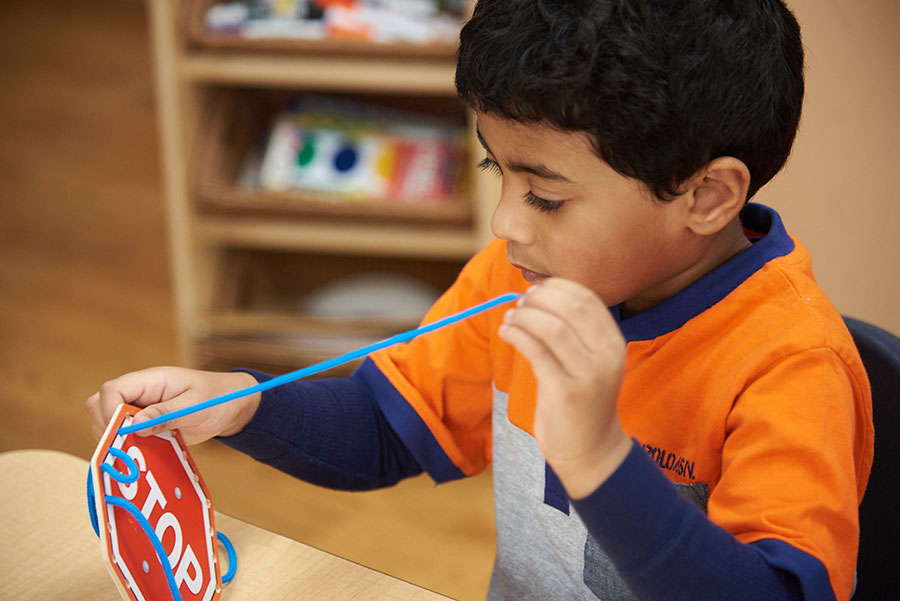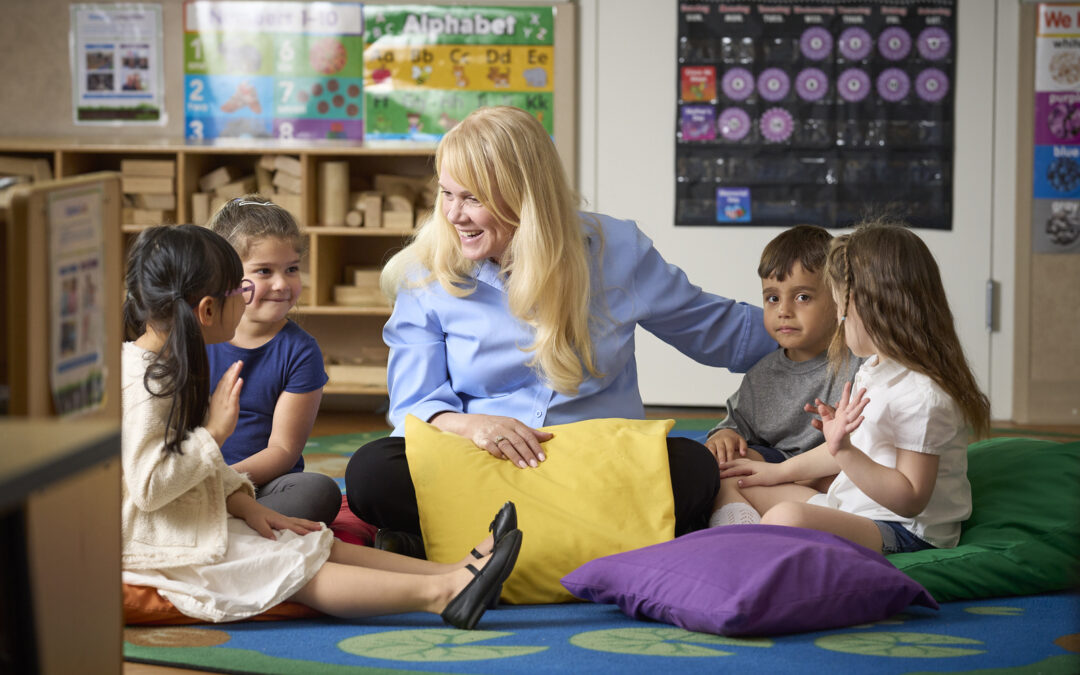Most of our toddlers and preschoolers seem to produce an overabundance of “arts and crafts” here at Lightbridge Academy. With the exception of a few budding Picasso’s whose work may be destined for the MOMA in New York City, most of the artwork our children bring home looks like stuff they glued in a way the teacher probably never imagined as she neatly cut out those pieces or just big blobs of seemingly “unrecognizable nothings” on slightly crumpled paper of all shapes, colors, and sizes. Just what are we supposed to do with the overwhelming and endless flood of children’s artwork? What does it mean? What should we say? And where are we going to put it? Hey, our refrigerators are just so big.
Creativity and art is an important part of our children’s development. Holding a crayon or paintbrush and moving toward producing recognizable shapes and images are the first steps to learning to read and write. Without arts and crafts, our children would miss opportunities for developing self-confidence, using their imaginations, experiencing hands-on sensory exploration, making creations for which they are proud and producing little trinkets that we will keep and cherish forever. So although it may look like our toddlers are just having a lot of fun and using an enormous amount of glue, they really are “working hard.”
Creativity. Think about it, every item in every store – clothes, books, furniture – are just the arts and crafts of grownups. Somebody thought about it, designed it and created it. Try to imagine Billy playing with pipe cleaners and a cardboard box creating the first prototype of his personal computer, the beginning of a Bill Gates billion-dollar computer company or the little girl stacking construction paper scrapes, stapling them carefully along the edge and scribbling on every page, the first of many books written by New York Times best-selling author Anna Quindlen. So the next time we stuff one of our children’s seemingly unrecognizable arts and crafts creations in their backpacks, handle it with care, we can only dream about what our children and their creations may one day become.
Independence. Not every art project is the beginning of a life changing creation or invention, but it is the beginning of an opportunity for our children to develop a love of learning and the self-confidence to believe “I can.” Whether our children are cutting or gluing, molding or coloring, arts and crafts give children a chance to work independently, to develop their fine motor skills and to feel the pride of a job well done
Sensory Exploration. A child’s great creativity comes with sensory explosion: hands-on, messy, rub it on my face, taste it, “What if I glue the Popsicle stick to the table?” mentality. The exploration of arts and crafts materials can also be soothing and relaxing for children, and sometimes exhausting for adults
Imagination Unfolding. Limitless ideas for pretend play and learning can come from arts and crafts. When our children wear construction paper crowns, the room becomes a fairy tale kingdom of princesses, kings and dragons.
Refrigerator Proud. Children’s arts and crafts projects can create a comforting connection between home and child care center. When we acknowledge and display our children’s artwork at home, they feel good about their work and their school. Children learn their “work” is important and are often eager to show it to family visitors. Since it’s impossible to display or even keep all the art our little ones produce, ask them which one they would like to display. Add more artwork or exchange it depending upon the space you have.
Encouraging Your Children’s Creativity
Usually our toddlers feel proud and excited about their projects from child care and beyond, “Wow, that’s great, honey,” we’re often not sure how to respond. According to Diane Trister Dodge, author of the Creative Curriculum, children engaged in art go through four stages as they learn to hold and manipulate a crayon or pencil.
- Disordered scribbling. (What children like to do all over the walls.)
- Controlled scribbling.
- Naming a picture that wasn’t planned. (Your child’s teacher may include a dictation by your child.)
- Representative drawing. (Like the drawings of people who have arms and legs coming off their heads.)
We can support our toddlers efforts and encourage their creativity by trying the following:
- Avoid comparing your child’s work to another child’s.
- Realize that at this age, the process of creating is more important than what they actually create.
- Understand that art is soothing for most children, but some children resist sensory exploration or “getting their hands dirty.”
Incorporate the following ideas when talking to your children about their artwork:
- Describe what you see. “I see you used a lot of colors.”
- Talk about their actions. “You made the lines go up and down.”
- Ask about the process. “What part did you enjoy the most?”
- Encourage and support. “You made a lot of pictures today. Which one do you want to hang up?”
So the next time a flurry of little magazine page pieces spills from your child’s backpack, he’s scribbling on every piece of paper in the house or pulling all the tape from the roll, remember, they’re creating, exploring, using their imagination, and, of course, making a big mess. And we can only dream about what each child and their creations may one day become.






